The GrogHeads Interview: Jim Snyder & Rob Crandall of Flashpoint Campaigns: Red Storm
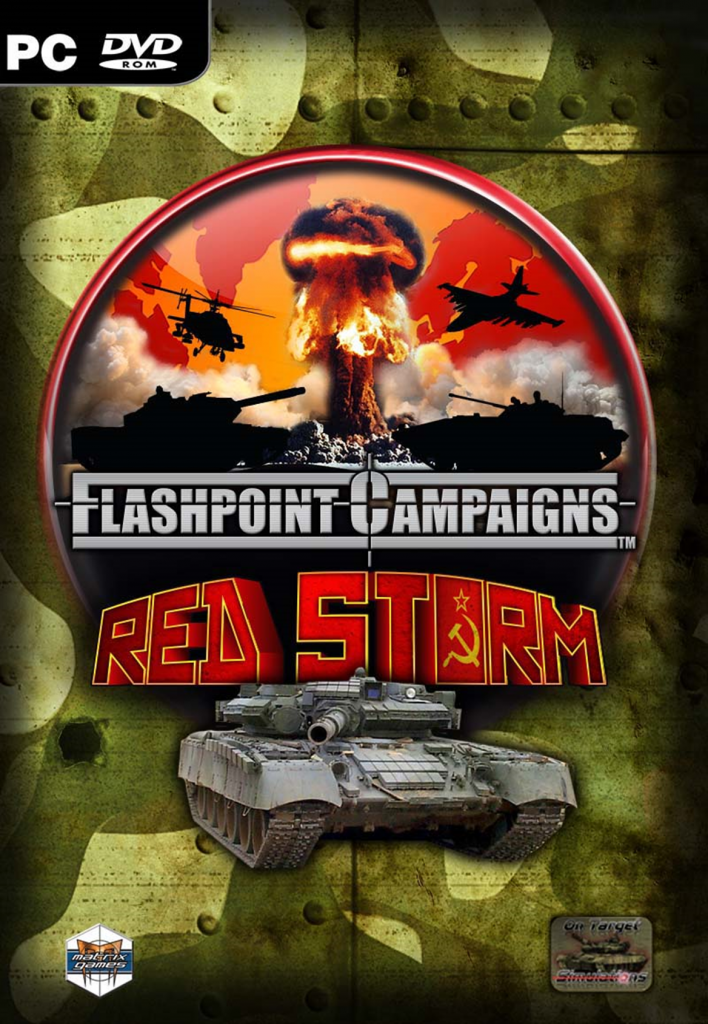 Grogheads interviews the twin geniuses (geniui?) behind the new Flashpoint Campaigns: Red Storm.
Grogheads interviews the twin geniuses (geniui?) behind the new Flashpoint Campaigns: Red Storm.
GH: Since the release of Flashpoint Germany it’s been eight years. For wargamers who have been dying to get their hands on the sequel, what took so long?
Rob Crandall: There is researching the game, designing the game, coding the game, testing the game and then documenting the game. Then you decide the original concept wasn’t that great after all and you repeat the process. Keep repeating until you run out of patience and/or money. Such is the carefree life of a game developer! The costs are all upfront and the payoffs are speculative and far away so it is a real test of commitment to see it through to the very end. Worse, although many parts of the work are fun, many are no fun at all and this can really bite. It is easy to zip through the fun parts but it takes discipline to do the rest when you know it will take months and months to do so. Mercifully, I had some outstanding help and the parts that were not so fun for me were picked up by partners who could do them.
I don’t have any direct evidence but I have often thought that for every ten wargames that get talked about only one gets started. For every ten that get started maybe only one gets finished. It is just that hard.
FPRS has almost 200 design documents supporting it, I have 3,500 emails sitting in Outlook regarding it since April 2007 and there are 10,500 forum posts in the Matrix private development forums. At least 100 testers must have helped me out over the years by now. Managing all that takes time too!
GH: Flashpoint Germany used tiles for movement. Flashpoint Campaigns: Red Storm uses hexes. Why the change?
Rob Crandall: I completely rewrote the square tile system so that each tile was broken down into a 4 x 4 grid of cells. Each cell had its own graphic and was rated for all the different terrain factors. The 16 averaged together represented the tile as a whole. It was awesome and very inventive, if I say so myself, but it was still squares and was too different from everything else. Converting the underlying code to hexes took something like a weekend and I have never regretted it. The result was I had to throw away my internal map editor and go to the existing system where we paint a map in a paint program and then scan it for values based on color IDs. That is a little more cumbersome but I loved the look and also loved that it became a chore I could delegate to people with greater graphic talents than I.
Jim Snyder: The graphics fell to me and I’m not really that good compared to a real graphics artist, but what I did does work. Plus folks will be able to mod their own stuff too.
GH: It seems like artillery is never ontime, ontarget, or on the right radio net. How did you guys model the complexities of radio nets, C2, retrans, and command delay, especially with regards to supporting units? How does the C2 system affect players?
Rob Crandall: There are multiple, cascading contextsensitive command delays that impact a number of functions in game.
We wanted to be realistic in a general sense, but modelling this too closely would have created total chaos in the mind of a nonprofessional player so we moderated it a bit. The concept remains though that no order is instantaneous and that complicated orders take longer to implement than simple ones.
Jim Snyder: The main command cycle for the player is a prime example. It is dynamic and changes as the game goes on. Lose a few subordinate HQs and what your time to give orders grow larger. Of course, this applies to your enemy as well. Hint, hint.
GH: The AI was pretty aggressive in Flashpoint Germany. What have you learned from that game and what can players expect in Flashpoint Campaigns: Red Storm?
Rob Crandall: We wanted several changes in the new AI but there were two main themes. First, we wanted to see more maneuvering on the battlefield and less of a pellmell rush to contact. We wanted to see the forces dance around a bit before going for the clinch. They will try to maneuver to open flanks if they can find them and get into the rear of the enemy where possible. When playing with full FOW this can lead to some nail biting moments.
Secondly we wanted to see a more realistic cycle of combat. The old game had the advance to contact and then a slogging match ensued until the battle was decided. The new AI will advance to contact but if the initial attack fails it will pull back, consolidate and try again elsewhere. The AI can evaluate its alternatives better and give up on a losing course of action before it was too late and go for something better. The human player will get more of a workout as the tide of battle ebbs and flows across the map.
Nothing is scripted in the AI and it uses only the info available to the human players. It pays close attention to the location and weight of every victory point hex on the map and it tries to frustrate the best move of the other player. It also plays quite differently from game to game so there is a lot of replayability. Occasionally it will do something that looks a little dumb but when we dump the AI weightings and examine them, it often turns out that it was considering more than we were and it wasn’t being so dumb after all. We are pretty happy with it right now.
GH: It’s clear that Red Storm has been created to allow for lots of mods. Just how deep can modders get into the game to make changes?
Rob Crandall: There’s a LOT! But here’s a list of the big ones:
- All Excel data which includes a certain number of magic values
- 2D artwork (unit badges, silhouettes, map art, map symbols, etc.)
- Scenarios and campaigns
- Maps if feeling ambitious and map values
There is no access to core game mechanics or AI except as driven by “magic values” and the data in a general sense.
Jim Snyder: All also add to what Rob has covered with sound effects, music (I love the themes and wouldn’t recommend changing them). There is really nothing stopping you from creating your own modern war anywhere you like. The only things set in stone today is the hex size at 500 meters.
GH: Flashpoint Germany has been used for a variety of multiplayer exercises in a collaborative (i.e., “offline”) setting. Given the great success it’s had with these sorts of events, what would you need to do to enable that sort of ‘staff’ gaming with current game?
Rob Crandall: I hate to do this, but here’s another list
- Better planning tools graphics for assembly areas, phase lines, objectives, etc.
- Better pregame preparation of the battlefield like recon / intelligence, engineering, arty fires, etc.
- Create an umpire mode to intervene midbattle to edit the game state in various ways.
- Have a more comprehensive game replay both forwards and backwards, details and summary, most recent turn and game to date.
- Do a total rewrite of the supporting LAN play code (which is currently turned off) to replace DirectX with web service calls and JSON.
GH: What was the biggest change your audience wanted from Flashpoint Germany that you weren’t able to work into Flashpoint Campaigns: Red Storm? Was there anything from the original that you felt was a “preserve at all costs” feature?
Rob Crandall: Something we wanted very much to retain was the “command perspective” that you are in charge of a series of wildly different units with different capabilities and requirements. You are the boss and are responsible for making it all work but you are not supposed to micromanage the whole thing. You have to learn how the units work and assign them the orders up front that will get the job done and then you have to leave them to it. It is a fine line to tread and is full of dilemmas for the player.
The FPG crowd hated my decision not to allow dismounted infantry. In my opinion at the time infantry and supporting arms without organic transport were useless in the kind of high tempo combat envisaged for WW3. I still pretty much feel that way but put them in anyway to let people find that out for themselves. The other big gripe from FPG was the AI and I spent a lot of time working on that (frequently when I was nowhere near a computer but could just think and plan in more abstract terms) and I’m told the results show. Time will tell but I am quite happy with it. An unexpected offshoot of that was that I could not put in interesting new game mechanics like preplotted artillery barrages unless I could also teach the AI to handle them properly. This was far easier said than done and I had to purge a number of completed features because I had no time to do the supporting AI part and still ship the game this century. Someday though!
Programming a computer wargame is hard. It is impossible to overestimate the number of issues you will stumble across ranging from the trivial to the profound. Every new pair of eyes that comes to the project immediately sees dozens of items that need attention. In March of 2012 I resolved just to clean up what I had (which I believed at the time to be all but ready to ship) and get it out the door. It took another 18 months and the completion of over 1,400 additional feature enhancements, improvements and bug fixes to get us here. Yikes!
GH: How has aviation and air support been modeled in Flashpoint Campaigns: Red Storm? What about battlefield multipliers like electronic warfare, engineers, groundsensing radars, or counterbattery radars? What effects did you find most challenging to incorporate into the game? Which were just too darn hard to code based on the payoff that was likely to come out of the game?
Jim Snyder: Air assets like close air support and level bomber aircraft are added by the scenario designer and they can come and go on station during the course of a scenario. They are great to have if you have suppressed the enemies air defense and can spot a clump of armor or a HQ units. We also have scout and attack helicopters as on map assets that are ordered around just like normal units.
We have an abstracted electronic warfare model which is a setting in the scenario design. It impacts orders delay for now and is one area we want to improve on in future releases.
Engineering functions are in the game but their use is again an abstracted mechanic. You “call” engineers to build or blow bridges or to clear mines and obstacles. Adding actual on map units and more detailed operations is high on our update list and with an ex Combat Engineer on the team, you can bet it will be done right.
Air search radars and warning receivers are in the game with a simplified model. Counter battery radars are abstracted into the artillery model as a chance of detection and attack again firing artillery systems. Battlefield radar units can be found in the data and in some of the scenarios, but the “radar” function is not yet modeled and is on the update list.
Anything dealing with electronic warfare is a challenge. It could be a game unto itself. That is why a number of the functions are highly abstracted or missing right now. We feel we put in just enough fidelity to work with the game and not be too little or too much of a game changer.
GH: Are there any ‘hypotheticals’ that you were able to work into the game? Those weapons and systems that weren’t quite ready for primetime, or never got deployed to theater, that might’ve made for interesting alternate ORBATs? Has anyone asked you to put the SGT YORK system into the game, y’know… “just ‘cuz!”?
Jim Snyder: Simple answer is not really. There are a number of units and configurations in the game that might be a low number or based on what data source you look at too early or too late for the time period. The idea was to stick to the principle hardware of the 80s.
Plus we have the ability for the players to mod just about everything. If you want a York in the game, add it in. Just remember it was, big, slow, and couldn’t hit water if it fell out of a boat. US should have purchased the Gepard IMHO.

GH: Red Storm will place greater emphasis on scouting, and correspondingly will inject uncertainty in unit identification, too. How complex will this cat and mouse game be, and will there be opportunities for deliberate countermeasures and spoofing?
Jim Snyder: We did give recon type units a number of capabilities normal units do not have. The can see further into terrain, they are tougher to spot, and they have unlimited command range.
I would like to get more of the cat and mouse in future versions of the engine by adding spoofing type operations and units. I want to get artillery delivered jammers and false radio messages in the system. I want units to “disappear” off the map because the coms to them have been jammed. Also get more fuzziness around spotting reports and kill claims to add more of the human factor to the intel picture.
Rob Crandall: There is a very detailed spotting model in the game and with the Fog of War fully activated the cat and mouse comes from the spotting and disappearance of units on the map and the limited intel from the counters.
GH: What would we have asked you about if we had been secretly monitoring your weekly conference calls during game development?
Rob Crandall: “Can’t you guys make a decision?” – Game development is often an iterative process. You sit down with paper and pen and draft up an idea of some sort. Then you spreadsheet it and/or PowerPoint it to work out the kinks. Then you implement it, release it and look for feedback. Sometimes the feedback comes right away and sometimes it comes years later. We spent a lot of time discussing the impact of design various decisions and what the consequences pro and con were. We found remote desktop software invaluable because we could take turns showing each other what has happening on our computers. (There is no other way to write games as far as I am concerned.) Some issues just needed many cycles of show and tell before we were all happy.
“What’s with all the laughter, can’t you guys be serious?” – Part-time game development can be fun if you do it right. We all have day jobs to bring us down already so we do this to restore a balance. I think it is fair to say that all of us made a deliberate effort all along to keep things light and in perspective. If it had all turned into just another chore or an extension of what we do for a living the project never would have survived. We kept that in mind and so we had fun doing it.
GH: Thanks muchly to the guys from Flashpoint Campaigns for taking some much need bug-squashing time to, well, let’s be honest – to pimp their game to its intended audience! Give it a try and tell us what you think about Flashpoint Campaigns: Red Storm.


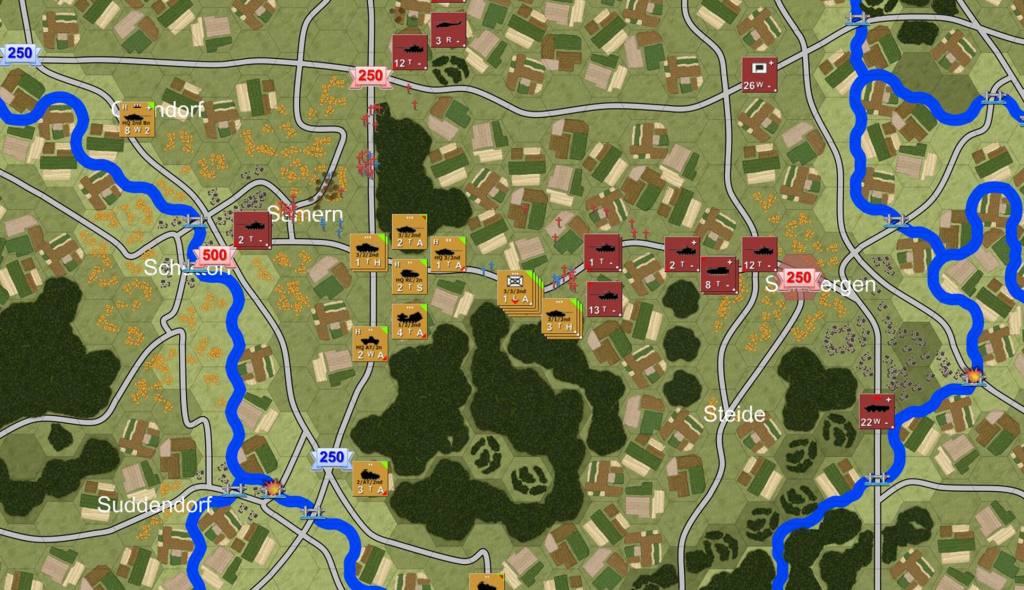
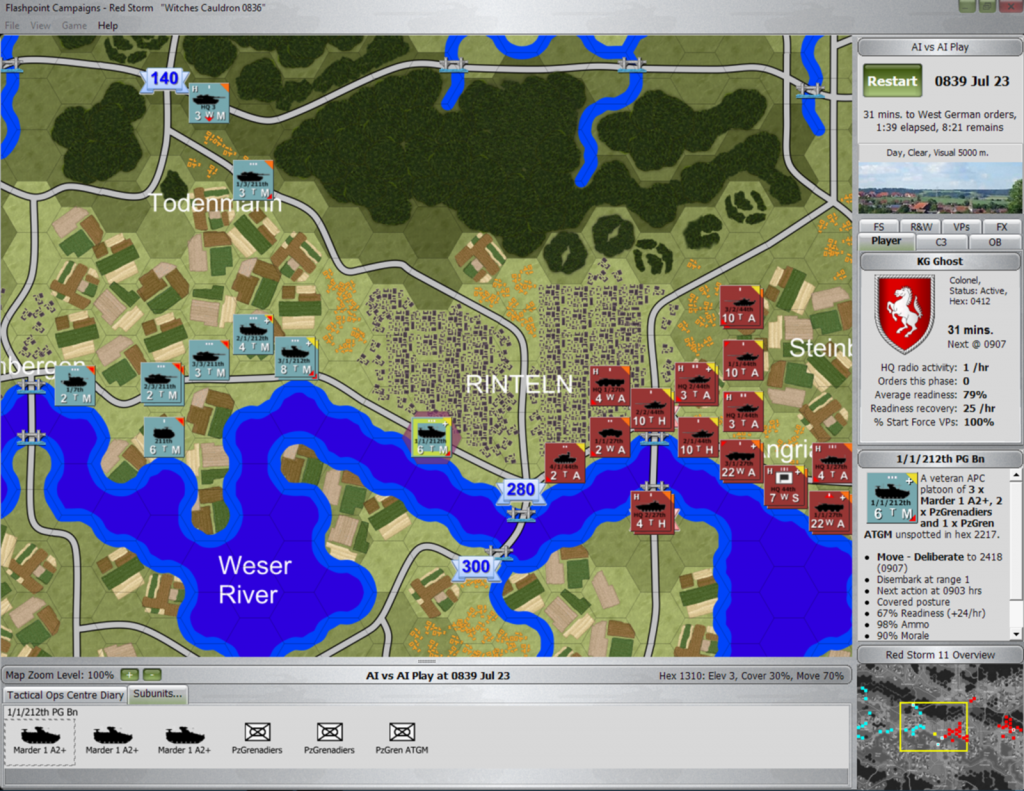
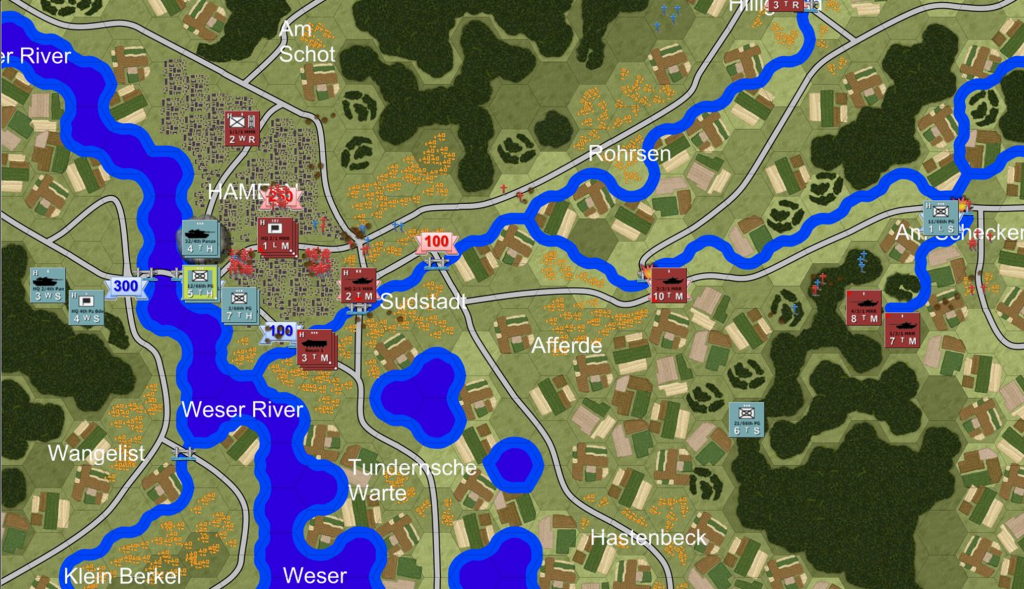

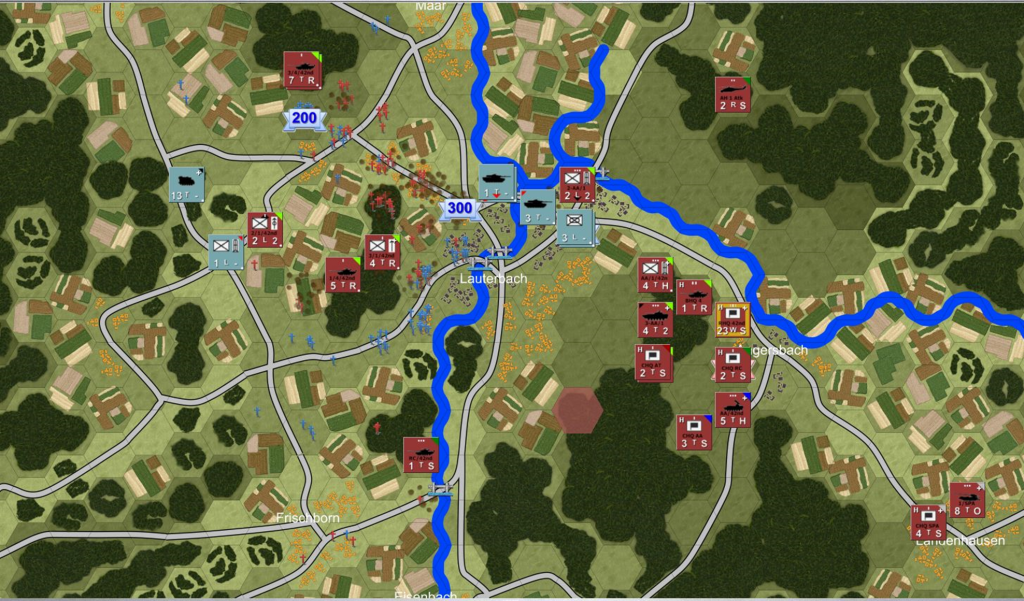

[…] – Top of the 2013 list for me was finally getting Flashpoint Campaigns: Red Storm out and seeing how well received it has been. It’s not perfect, but I think we did a number of […]